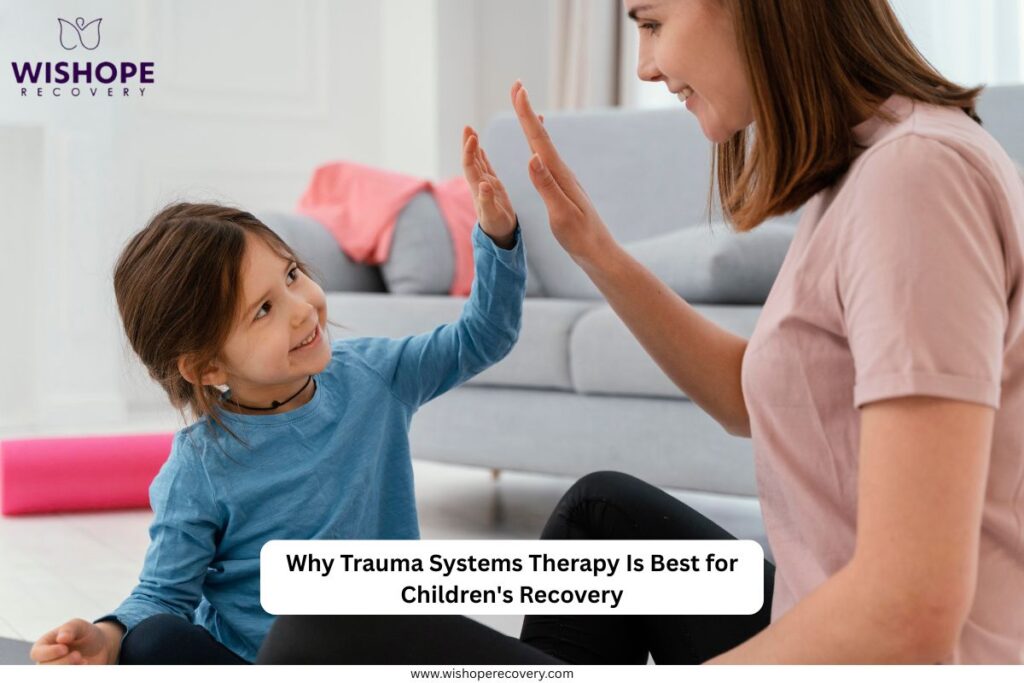Childhood should be a time of learning, joy, and growth. But for many children and teens, it’s also a time when they experience serious emotional pain. Trauma from abuse, neglect, loss, or unstable environments can deeply affect a child’s mental and emotional health. When left untreated, these early wounds can lead to long-term issues with trust, relationships, learning, and behavior.
That’s why choosing the right form of treatment is so important. One of the most effective methods available today is Trauma Systems Therapy, a holistic and evidence-based approach that goes far beyond traditional talk therapy. This model looks at both the child’s emotional struggles and the environment that’s contributing to them.
What Is Trauma Systems Therapy?
Trauma Systems Therapy, or TST, is a structured clinical model designed to treat children who are not only suffering from trauma but also living in environments that continue to trigger their emotional stress. It combines elements of trauma-informed care, behavioral therapy, and systems-based interventions to create a support structure that truly works for young people.
What makes TST unique is that it doesn’t focus solely on what’s happening inside the child. Instead, it takes a whole-system view addressing both the child’s emotional needs and the external factors contributing to their distress. This dual-focus model makes it one of the most effective forms of trauma recovery therapy, especially for children and teens whose trauma is ongoing or linked to unstable environments.
TST integrates several therapeutic principles, including:
- Trauma-informed care ensures that every interaction is guided by empathy, understanding, and safety.
- Behavioral therapy techniques that help the child recognize and respond to emotional triggers.
- Systems-based interventions that work with caregivers, schools, and social workers to improve the child’s broader environment.
1. Emotional Regulation
Children who have experienced trauma often struggle with overwhelming emotions like fear, anger, or sadness. These emotions can appear suddenly and feel out of their control. Through Trauma Systems Therapy, young people are taught practical strategies to:
- Recognize emotional triggers
- Name and understand what they’re feeling
- Use calming techniques to reduce emotional intensity
- Develop coping skills to manage stress in healthier ways
By focusing on emotional regulation, TST empowers children to regain a sense of control over their internal world. This leads to fewer emotional outbursts, improved communication, and stronger relationships with peers and adults.
2. Environmental Stability
Even the most skilled therapist cannot help a child fully heal if the environment around them continues to cause stress or harm. That’s why the second pillar of TST is creating safe and supportive surroundings. This involves:
- Working closely with parents, foster families, or caregivers to establish consistent routines
- Collaborating with schools to ensure the child feels secure and supported in the classroom
- Training adults involved in the child’s life to respond to trauma with sensitivity and structure
The goal is to remove or at least reduce the external triggers that keep the child in a constant state of emotional alertness. When a child’s environment becomes more predictable, nurturing, and safe, they are far more likely to thrive.

Why This Approach Works for Kids
Every child processes trauma differently, but what they all need is consistency, understanding, and support. Trauma Systems Therapy creates a safe space not just in therapy sessions but in the child’s overall life.
Here’s why it works so well:
- It’s developmentally appropriate: The strategies are tailored for children and teens, helping them express emotions in ways they understand.
- It includes the family and community: Parents, caregivers, teachers, and other adults are part of the healing process.
- It’s action-focused: This isn’t just about talking. It’s about building real-life skills and creating a stable, supportive environment.
Whether your child has experienced abuse, witnessed violence, or struggled through family breakdowns, this therapy provides tools to support childhood trauma recovery in a safe and structured way.
How Trauma Informed Care Helps Support Healing
At the heart of TST is trauma-informed care. This approach means therapists, caregivers, and professionals understand how trauma affects behavior, emotions, and learning. Instead of asking, “What’s wrong with this child?” the question becomes, “What has this child been through, and how can we help?”
This mindset builds trust, reduces shame, and allows children to open up at their own pace. It also reduces the risk of re-traumatization, which can happen when kids are misunderstood or blamed for their behavior.
Many parents searching for therapy for teenagers near me are turning to trauma-informed practices because they are more sensitive, effective, and lasting.
The Role of Therapists and Support Systems
In trauma recovery therapy, the therapist isn’t just a guide; they become part of a child’s safety net. At centers like WisHope Recovery, trained professionals use a compassionate, research-backed approach to help children regain a sense of control and confidence.
But therapy alone is not enough. Support systems such as schools, foster care, or family homes must also play a role. TST helps connect the dots between these environments to make sure healing happens at every level.
If you’ve been searching for trauma-informed care near me, it’s essential to find providers who don’t just work with the child but also collaborate with family, educators, and medical professionals for a well-rounded recovery plan.
Benefits of Trauma Systems Therapy for Children and Teens
Here are a few ways TST supports long-term healing:
- Improved emotional regulation: Kids learn how to recognize and manage their emotions before they become overwhelming.
- Better school and social functioning: With environmental changes, kids often return to school with more focus, fewer outbursts, and stronger relationships.
- Stronger family bonds: By involving family in therapy, parents gain tools to support their child through tough moments.
- Safer, more supportive environments: TST encourages lasting changes at home, school, and in the community.
Conclusion
When it comes to treating trauma in children, there’s no one-size-fits-all solution. But Trauma System Therapy offers a powerful, personalized path to recovery by addressing both emotional needs and the environments that shape a child’s life.
WisHope Recovery offers professional, trauma-informed care designed with your child’s well-being at the center.
Start your child’s healing journey today. Reach out to WisHope Recovery and discover how their experienced team and compassionate approach can help your family move forward.Their approach to healing childhood trauma is grounded in evidence-based practices like TST and enhanced by therapies such as EMDR, sensory integration, and behavioral support. Contact us now to learn more about programs, availability, and how to begin the path toward lasting recovery.

